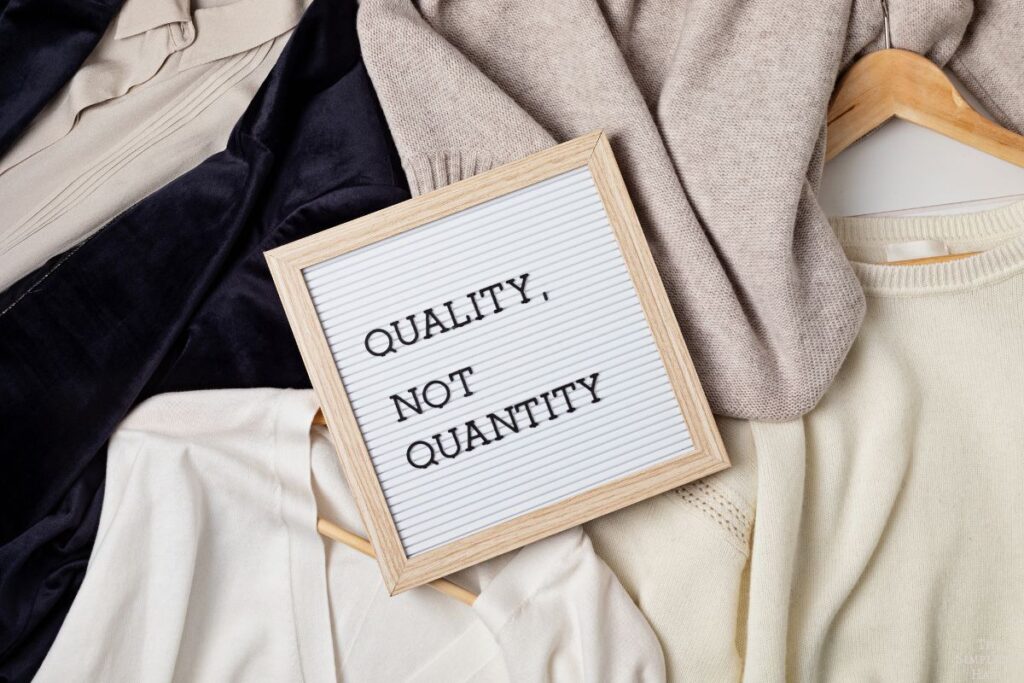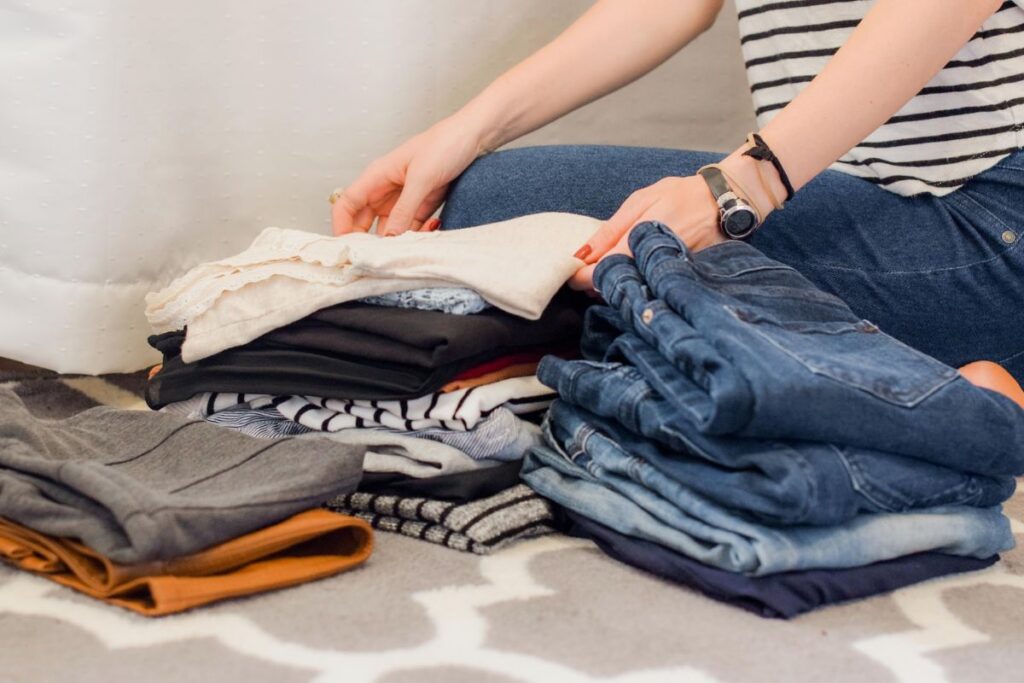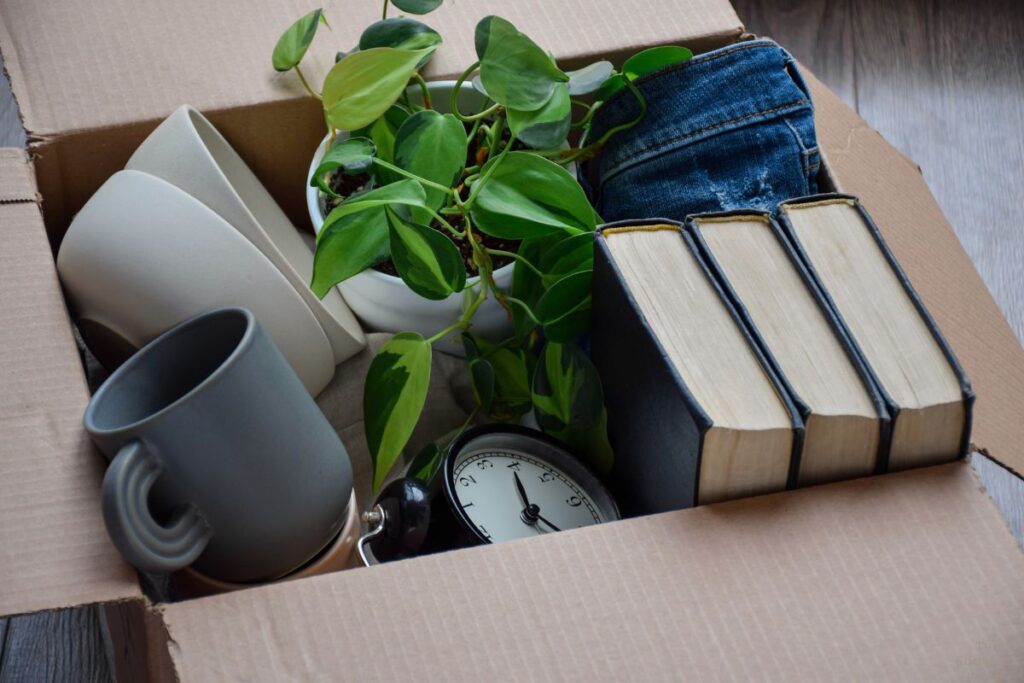Inside: Ten popular minimalist rules to save money and prevent clutter in your home.
Are you tired of dealing with a seemingly endless stream of clutter in your home – but don’t know how to fix the problem?
You’re not alone.
Clutter can create chaos in our space, stress us out, and make it hard – if not impossible – to truly relax. And while there isn’t a one-size-fits-all solution for everyone, there are a few things that might make the process of keeping your home clutter-free a little bit easier: minimalist rules.
Over the years, everyone from professional organizers to passionate homemakers have come up with systems and rules to make getting (and staying) organized easier.
By picking a rule – or a few – to follow, you give yourself clear guidelines and expectations.
While it will take some effort and willpower to follow the rules at first, they’ll become easier as you practice them. And over time, when you stick to them, they’ll become habits that save you money and help keep your home clutter-free.

Try These Minimalist Rules to Save Money and Prevent Clutter.
These are some of the most popular (and most effective) minimalist rules to save money and prevent clutter.
The majority of these minimalist rules have numbers in the name which can be confusing, but the concepts are so helpful that I decided to include them all.
These rules and ideas are helpful even if you don’t consider yourself a minimalist.
1. The 80/20 Rule
This rule, also known as Pareto’s Principle is about how the majority of outcomes are caused by a minority of causes.
This principle has been applied to a variety of contexts. One is wealth where Pareto found that about 80% of Italy’s land was owned by 20% of the people.
With time management Pareto’s Principle states that 80% of results will come from 20% of your effort. In action that means that 20% of your clients produce 80% of your sales and that 80% of the decisions are made during 20% of a meeting.
Applied to our clothing, we tend to wear 20% of our clothing 80% of the time. This can be a useful guide as you seek to declutter your closet.
Taking this same rule into other areas in your home can empower you to be more ruthless as you get rid of junk. If 20% still seems like too much, you have the next minimalist rule…

2. The 90/10 Rule
The 90/10 rule is all about quality over quantity. The idea is simple: identify the 10% of your possessions that bring you the most functional use, value, or sheer joy.
Prioritize the things that matter, and find ways to minimize the rest.
It might sound dramatic – 90% of your belongings probably represents a lot of stuff. But when you really get down to it, it’s not as hard as you think to identify the 10% you truly use.
You’re probably only wearing a fraction of the clothes in your wardrobe, or using only a few appliances in your kitchen regularly.
By learning how to part with the stuff that’s simply taking up space, you’ll find yourself living a more minimalist lifestyle.

3. The 95/5 Rule
Taking the same principle from the previous two minimalist rules to the extreme and you get the 95/5 rule.
This rule focuses on essentialism and the very small percentage of things that are critical. In a society that is constantly telling you to buy more, it’s easy to amass far beyond what is necessary.
As you declutter your space, you gain clarity on what things you truly love and use. When you continue to practice decluttering, you may find additional items you’d saved before that you later realize you didn’t need.
You can use this rule not only with the things you own, but also with how you spend your time by identifying your top priorities and decluttering the excess in your schedule.
The 95/5 rule focuses on the cream of the crop so that your time, energy, and resources are focused on the things that matter most.

4. The Project 333 Rule
If you struggle with an overflowing closet, Project 333 can be a great way to embrace a more minimalist approach to your wardrobe.
How do you do it? Wear only 33 items of clothing for 3 months.
Everything counts toward your 33 items – clothes, shoes, outerwear, and even your jewelry. It might sound a little restrictive, but people who have completed the challenge have found it freeing to realize just how much they don’t need an endless pile of clothes.
It may also be eye-opening to see how no one notices you repeatedly wore the same pieces during those three months.
While Project 333 is specific in its guidelines, you could use the concept to create your own version of the challenge if you want.

5. The 90/90 Rule
When you’re trying to assess what’s become clutter in your home, the 90/90 rule can be a helpful guideline.
The 90/90 rule involves asking yourself two questions about any given item you own:
- Have you actually used it in the last 90 days?
- If you haven’t, will you use it in the next 90 days?
Sure, there are exceptions to this rule – like clothes, especially if you live in a place with dramatically different seasons. But for the most part, this method can be an effective way to understand just how much stuff is simply taking up space in your home.
If asking those two questions don’t give you enough clarity, check out these helpful decluttering questions.

6. The House on Fire Rule
Have you ever thought about what you would take with you if you suddenly needed to evacuate your home?
Having lived in Southern California, this is not only something I’ve thought about but something I’ve done. While we thankfully never had our home damaged, it did put into perspective what matters most and what’s just stuff.
When you think of decluttering in reverse and focus on the essential items you want to keep it can bring clarity to which things are excess.
This rule provides a perspective shift so that instead of thinking about what you’re letting go of, you’re focusing on the more important things that you’re keeping.

7. The 90+ Rule
The 90+ rule is a helpful guideline when you’re trying to decide whether to purchase something or not.
As you consider an item, give it a grade. If it isn’t above a 90 don’t buy it.
This rule will save you money and prevent you from bringing clutter into your home. All too often people settle and buy items they don’t truly love. Those are often some of the first items to get decluttered.
You can use this same rule when decluttering items that you already own. It can help you determine if the item is worth the space it’s taking up.
The 90+ rule can be applied to other areas of your life as well. As you prioritize your time consider what particular events would score. If it doesn’t rate high enough, say no.
This rule is another way to help you decide what is essential and what isn’t.

8. The 30/30 Rule
For many of us, clutter accumulates because we can’t curb our desire to shop. Whether we shop online or in stores, our inability to say “no” can be problematic.
The 30/30 rule isn’t necessarily about saying “no” – instead, it’s “not right now.”
If you want to purchase something that costs $30 or more, ask yourself a simple question: can you live without whatever it is for the next 30 hours?
If the answer is no, go ahead and make that purchase. But if the answer is yes (which it almost always will be)? Force yourself to wait.
By giving yourself that window of time to dwell on it, you can distance yourself from making an impulse purchase and make a more rational decision about whether or not you actually need it.
Implementing a waiting period will help you to be more intentional with what you buy.

9. The One In, One Out Rule
This is another rule that’s focused on helping you combat the urge to shop.
Want to buy something new? That’s fine – but you’ve got to get rid of something as a result.
New pair of jeans? Find a pair to donate.
New piece of artwork? Time to say goodbye to a piece you don’t like as much as the new one.
This rule can help prevent you from buying things you don’t need especially if you really like what you have and don’t want to get rid of something.
Even if you do decide to purchase, having the one in one out rule will help to keep you from amassing more things.
By committing to get rid of something for every new item you buy, you force yourself to be more thoughtful about your actions.

10. The 2-Minute Rule
The 2-minute rule is an effective way to maintain your space and keep it tidy after decluttering.
Many of us are quick to put tasks off until later. We throw the pile of mail down on the kitchen counter to deal with another time.
Or we put our dishes in the sink instead of rinsing them right away and popping them into the dishwasher. We put off simple tasks, like wiping down counters or folding laundry – and eventually, they add up to an overwhelming amount of work.
By following the 2-minute rule, you commit to doing anything that’s going to take you less than 2 minutes right now – no procrastinating. Developing this habit will help keep your home clean and organized with minimal effort.
Whether it’s answering an email, paying a bill, putting away the clutter on your countertop or something else, you get it out of the way.
It might not sound like much, but it’s an impactful way to keep you from getting overwhelmed by the amount of stuff on your to-do list – or in your physical space.
When you develop decluttering habits in your home, you maintain your space so it stays clutter-free.

Final Thoughts on the 10 Minimalist Rules to Save Money and Prevent Clutter
You can adopt minimalist habits and rules even if you don’t consider yourself a minimalist.
I would not suggest trying to implement all ten of these minimalist rules at once. Choose one or two that resonate with you most or that you think would have the biggest impact on your life and start there.
Big changes happen over time with repeated action that help move you toward your goals. If you want to save money and prevent clutter, these minimalist rules can help.
Which of these minimalist rules to save money and prevent clutter would make the biggest impact for you? Leave a comment and let me know.
Sign up on the form below to get weekly decluttering tips and inspiration sent straight to your inbox. You’ll also get the free 5 Areas to Declutter in 10 Minutes Checklist to help you get started decluttering today.
window.fd(‘form’, {
formId: ’60fafee5c580329d41b9a50d’,
containerEl: ‘#fd-form-60fafee5c580329d41b9a50d’
});
The post The 10 Best Minimalist Rules (to Save Money and Prevent Clutter) appeared first on The Simplicity Habit.

